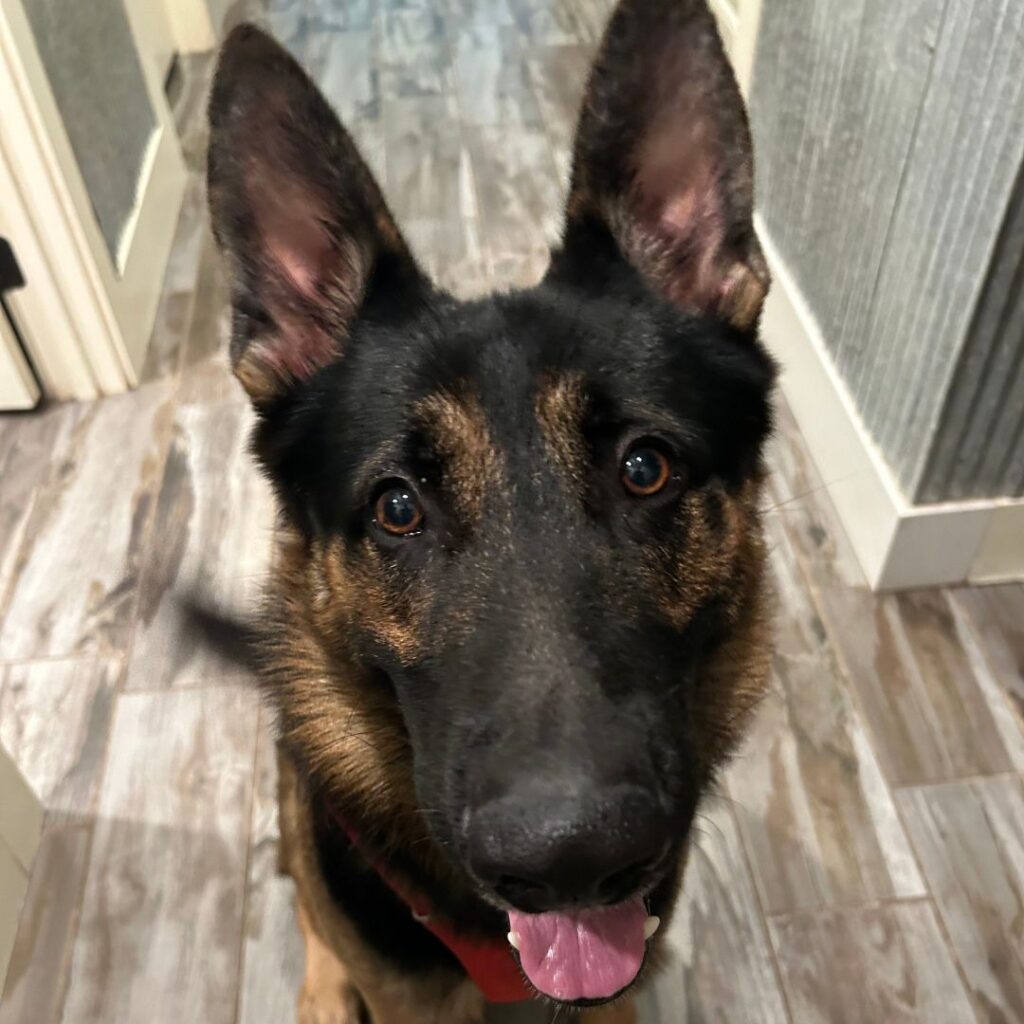Kitkat didn’t want to go into her crate, and at nine weeks old, I couldn’t fault her for it. She had only recently left her mother and littermates, and transitioning from a puppy pile to sleeping alone was proving to be difficult.
While we’re finding that allowing puppies to sleep with their people can help with potty training and ease the potential for separation anxiety, crate training can be a useful skill for most dogs. All dogs have to go to the vet, sometimes for surgeries or drop-off visits, where they may be contained in a crate or kennel. Often, dogs have to go to the groomer, which is another location that a crate or kennel may be necessary. More and more groomers are offering mobile grooming or immediate calls when a dog is done, which helps prevent some of that stress for both dog and human. In any case, crates can be unavoidable, and training can help make the difference between a relaxed dog and a stressed out one.
Fortunately, puppies need naps and structure to their days, so Kitkat got to be with her person and then transitioned to her crate for her naps. To prepare her, we made sure she got exercise with her older brother, some training, and then a chew or Kong for her to enjoy in her crate with the door open. Additional kibble or treats helped reinforce her in the crate, and then when she was asleep, she was left alone to nap.
For puppies and older dogs, a gradual introduction to a crate and rest may be necessary. This can be tricky if the crate has been poisoned, or if the dog is used to being placed in the crate and left for several hours. They can often then associate the crate with something they don’t want instead of being a place where they can rest. This is a separate issue from separation anxiety, which is a severe medical issue that needs more in-depth training to get to the root of the panic the dog experiences. We don’t want the dog to be in distress either way, but often destruction or vocalization can be different from true panic when being left alone, which often entails blown out pupils, drooling, sweating from paw pads, pacing, and more.
Whether there is distress or separation anxiety, removing the need for the dog to be in the crate can help rebuild a crate to be a safe space. I’ve recommended doggy daycare, a WFH employee who would like the company of a dog during the day without the long-term responsibility, or even a different location, like a dog-proof bathroom or laundry room.

From there, we rebuild association with the crate.
Aspects that I look for include:
– Does the dog go in willingly? Will they go in with or without coercion (dropped treats, for example)? Even with the treats, are they hesitant and keep their rear paws out? Is their body tense?
– What’s the association with the crate? Is it only used for when their person leaves the house? Is the dog pushed in and the door shut? Is it used for mealtimes and/or enrichment activities?
– If the dog is willing to go in, can they curl up and go to sleep? Can they sit? How do they feel about the door of the crate shutting? Can the person leave the room?
– What’s the crate set up? Is it in the epicenter of the house with lots of movement and noise, or is it in a quieter area, like a bedroom or bathroom? How much light is in the room? Is there a possibility for dimming the lights or shutting the lights off? Can the dog listen to white noise, music or a TV show or movie? Is this relaxing for the dog or overstimulating?
Another puppy, Maple, did well with her naps in the laundry room, but she hated when the light was shut off. With the light on and music, however, she happily napped for 3+hours. Some guidelines and suggestions don’t work for every single dog, and that’s okay.
Some dogs need a bit more, while others do very well after just getting their meals and enrichment in the crate. If the dog is vocalizing and struggling with the crate, stop and re-evaluate.
Some basic steps to follow include:
1. Feed the dog in their crate with the door open.
2. Give the dog enrichment in the crate with the door open.
3. Train a “place” cue to a neutral object, like a towel, blanket or dog bed, and transition that to the crate.
4. Introduce shutting the door and then build out additional time and more complex situations.
5. Practice longer times in the crate as the dog is doing well, but try to avoid jumping from a few minutes to several hours.
With crate training, flooding the dog with forced crate time has the potential of making the issue worse, so positive, shorter interactions will be crucial. Ideally, the dog should be able to go in and go to sleep, but there are plenty of other options if the dog is having a hard time.
—
Do you need some help? Let us do the training! Telltail Dog Training now has a facility called Telltail at the Vale, which is located in Mabelvale. We are offering overnights with training from Sunday to Thursday, daily drop-off training from Mondays to Thursdays, private lessons, and group classes. We can take the guesswork out of crate training for you. Call 501-475-8481 or email telltailvale@gmail.com for more information.




